Holland, October 3-8, 2014
DELFT
We traveled from Frankfurt to Delft, Holland, via the ICE (InterCity-Express) through Amsterdam. The train journey was fast, but marred by a noisy drunken soccer team. It was a holiday – October 3 is Reunification Day – 24 years now! These guys were probably born after that. |
Compared to Davis, the oft-reported best cycling city in the US, we thought the German towns we visited were superior, but they were surpassed by the cycling facilities we found in Holland. In Delft where we were hosted by Bob’s cousin Ken Baar and his wife Dorina, we saw brown colored bike lanes and paths throughout the city and along the many canals with riders of all ages and dress including older shoppers and business people going to work, parents carrying 1-2 children, and high school and college students.
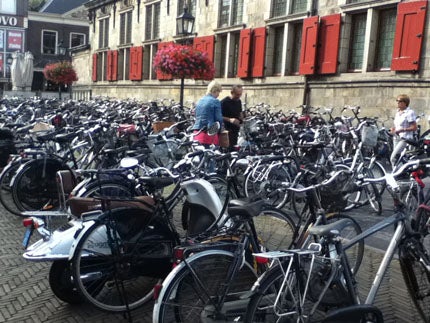 |
We dodged bikes on the street and even on sidewalks. No more jaywalking; we waited for the little green man to appear on the traffic light before crossing intersections. As in Germany, riders did not wear helmets but did use bike lights at night.[Sidenote about the little green man – in Erfurt, Germany and surrounding, the little green man is a vestige of the soviet era — one of the few things they wanted to keep after reunification.]

|
|
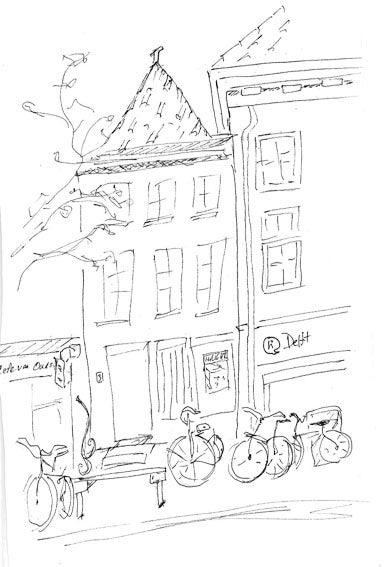 |
This is a tiny European nation with a small land area so they build houses up rather than out; three- and four-story houses seem the rule. We didn’t see as many red-brown tile roofs as in Germany. Things tilt, as does the Old Church.
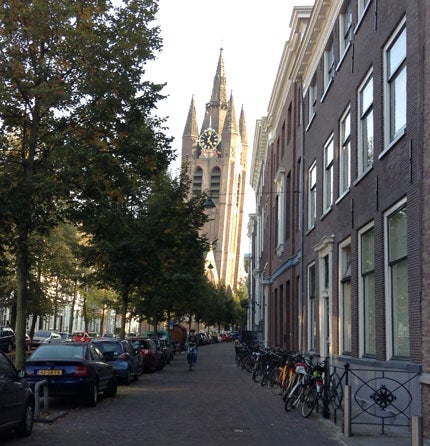
|
|
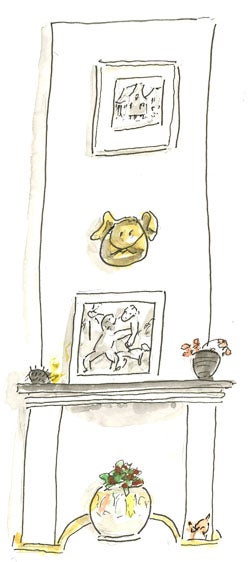
Interior, former fireplace at Geerweg 70
|
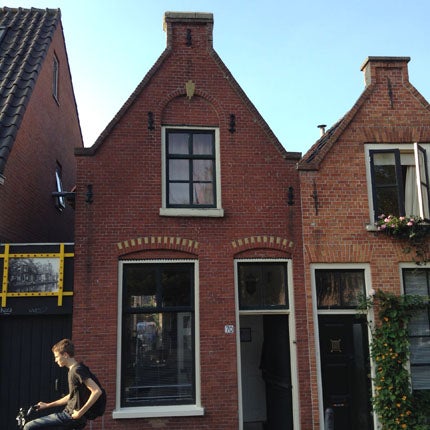
Ken and Dorina’s home
The tradition of narrow staircases remained true since our last visit over 40 years ago. Ken and Dorina had planned for us to sleep upstairs in their apartment but when we saw the narrow staircase, we opted to sleep on the downstairs sofa bed.
|
|
|

Food market
We sketched the large weekly market in the town square. There were three separate sections—a textile area, a food section, and a flea market. There were very few benches on which to sit and sketch, especially in large plazas where all the seating belonged to restaurants. On residential streets the benches were privately owned and off limits to itinerant sketchers. |
 |
|
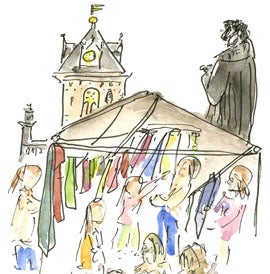 |

Textile market
|
|
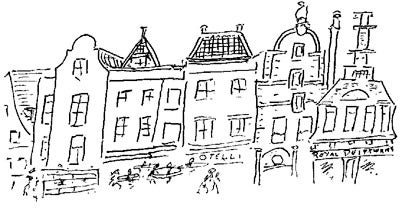
Grotemarket area
|
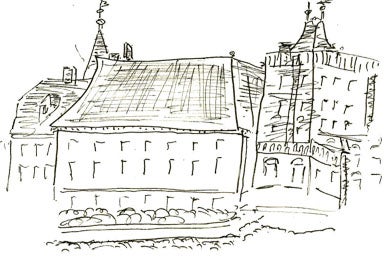
Building along a canal
|
|
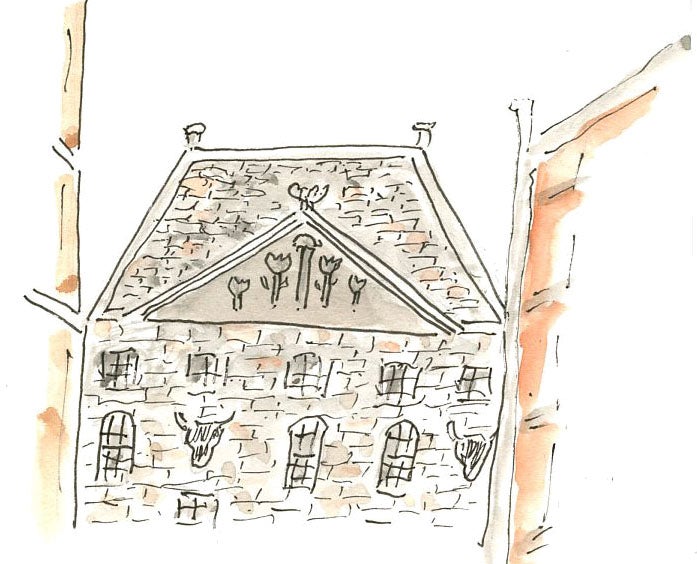
Delft Meat Hall
|

Table decoration at the Hills & Mills Cafe (fabulous pea and scallop soup)
|
|
|
DEN HAAG
We took the tram to Den Haag (The Hague), home of multi-national organizations, including the World Court and the 6000 employees of an international tariff agency.
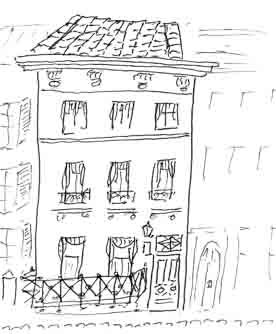
Residence
|
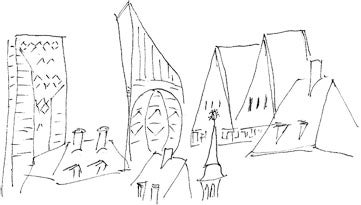
Skyline
We visited the Mesdag Panorama Museum and later the Escher Museum. The former is a beach panorama by Hendrik Willem Mesdag. Housed in a purpose-built museum, it is a cylindrical painting more than 14 meters high and about 40 meters in diameter. Like other panorama paintings of the period, it was intended as a money-maker but never achieved its hoped-for popularity. The graphic work of M. C. Escher is housed in the former winter palace of Queen Mother Emma.
|
|
|
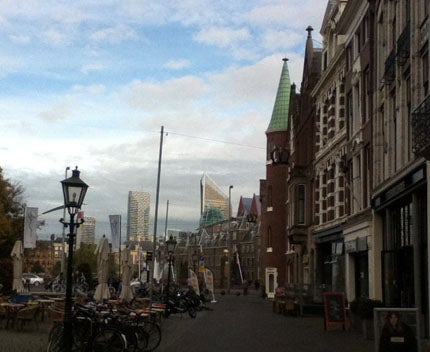
Den Haag contains a wonderful mixture of old and new buildings.
Returning to Delft, We had dinner with Ken and Dorina’s friend, Gretchen, who works on water issues in developing countries around the globe. There was much discussion about the weather. Days are gray – worse than Seattle!
|
 |
|
|
AMSTERDAM
Aside from brief stopovers, we had not been in Amsterdam for over 40 years. In August 1970 (during our courting time), we stayed with friends Ron and Peter in their house at Singel 33 (actually, they went on vacation in Italy). The house is nine feet wide and four stories tall, with dormer windows at the top for moving in furniture. At the end of this account, we’ll include sketches of their house and of the Singel Canal at that time. Today the house remains but Ron and Peter are long gone; more and larger tour boats cruise by on the canal where bicycles are stacked precariously along the iron railings.
|
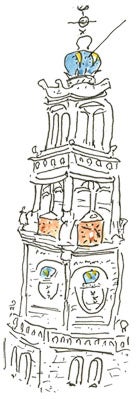
Top of the WesteKerk
|
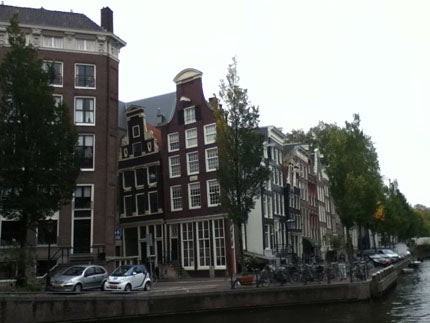
The buildings are tilted in all directions.
This is a vibrant prosperous city, with crowds on the streets and in the shops. Restaurants were full and it was difficult for us to get reservations at choice locations.
|
|
| We stayed in a charming but tiny hotel, the Nadia, with a staircase so narrow that a bellman carried all hotel luggage up and down; we could not have done it. There were large windows in our room and our eyes were drawn to historic buildings reflected in the waterway below.
Multatuli – “I have borne much” – the pen name of Douwes Dekker. In 1860, he published his novel Max Havelaar under the pseudonym of Multatuli. It exposed the abuses of the colonial system in Indonesia, and was read all over Europe.
|
|
We learned to get around by tram once we figured out that stops were marked by small rain shelters. We also had to remember to check our transit cards in and out of the tram.
We visited the Stedelijk Museum of art and design and the Hendrikje Museum of Bags and Purses. Bob’s dad had manufactured ladies handbags and his brother remained in the leather goods business. We also checked out the endless row of stands selling every size, color, and description of tulip bulb. There were occasional vendors of marijuana seeds and a definite whiff of weed in the air (legal in Amsterdam).
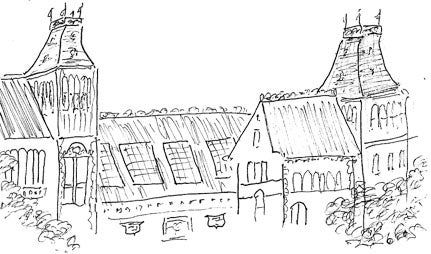
Upper part of the Rijksmuseum
|
|
|
| Our return flight from Amsterdam was more pleasant than our beginning trip. We had one aisle seat and a smaller plane with better service. The plane landed at Dulles where we went through an easy customs inspection. An initial 3 hours between flights stretched to almost 5 hours because of flight delays, but we arrived back in Sacramento in time to catch the penultimate Yolobus back to Davis and several days of jet lag. Below are marking-pen drawings that we did in August 1970. |
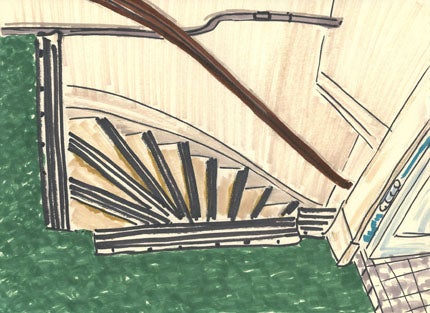
The ubiquitous steep stairway
Barb (on the right) – long-haired graduate student
|
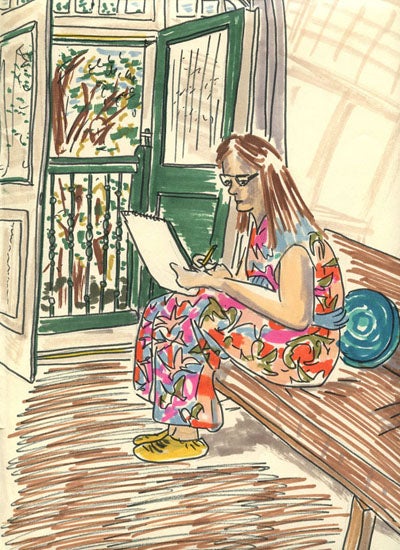 |
|
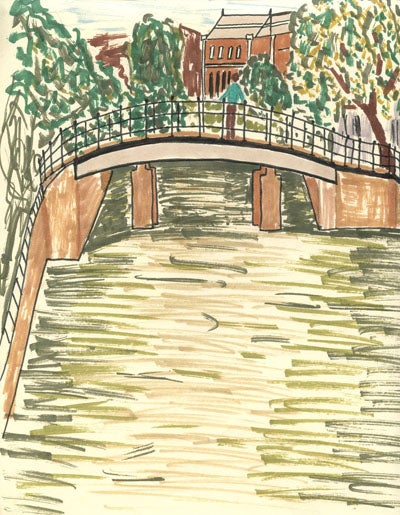 |
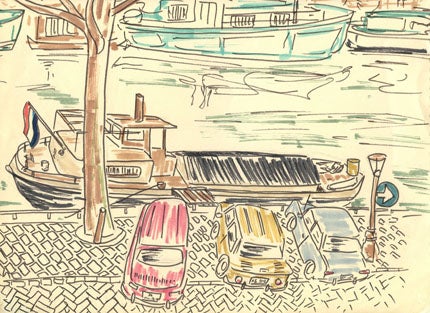
Singel Canal views
|
|
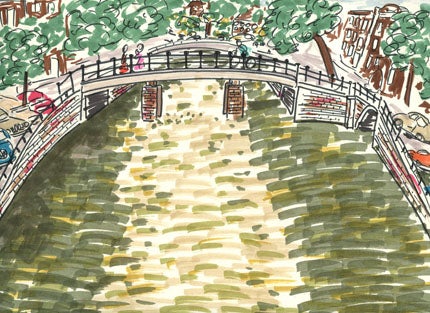
Farewell, Amsterdam! B&B |